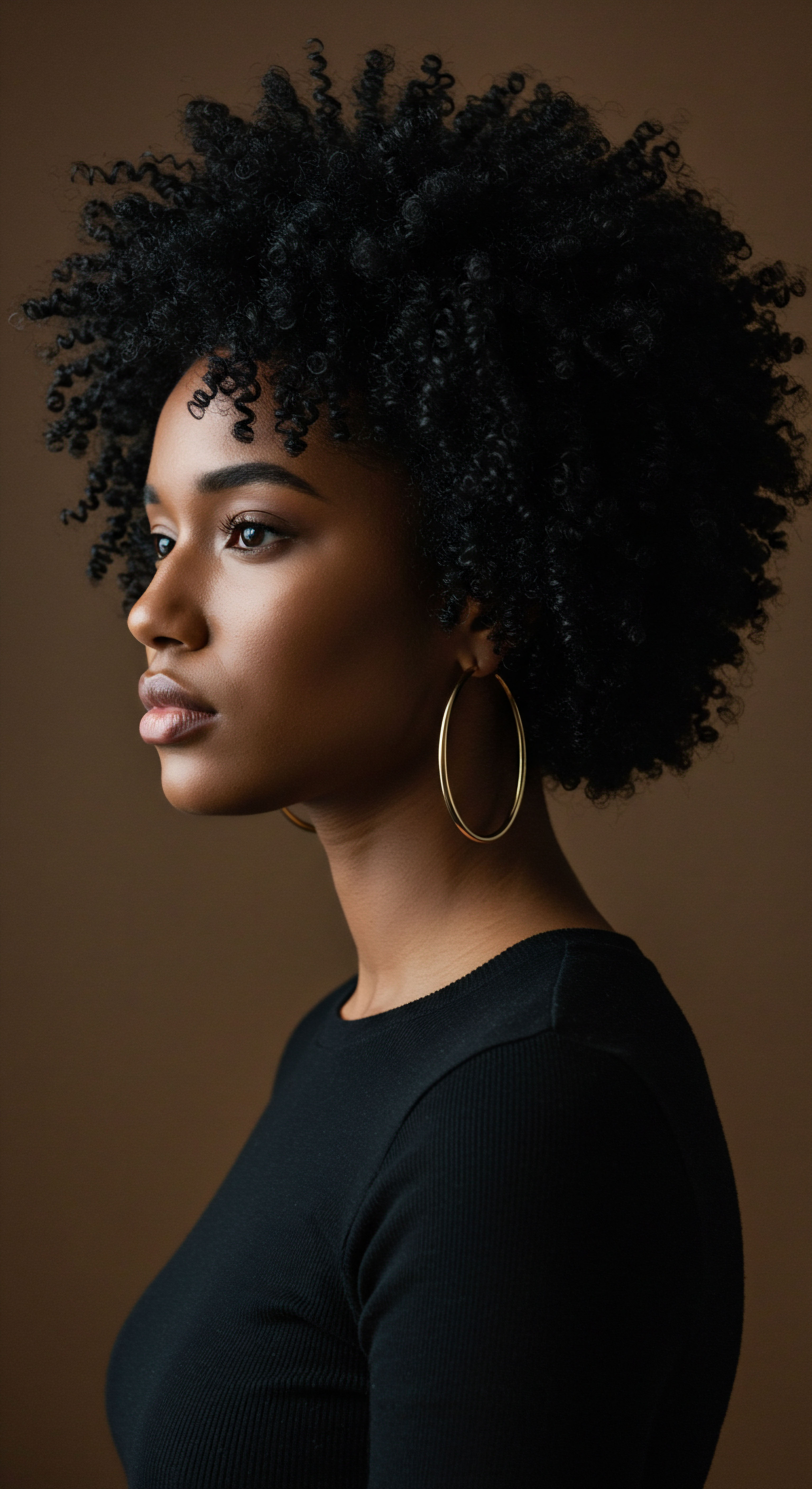
Roots
The desert winds whispered secrets across the sands of time, carrying echoes of ancient wisdom. For the people of ancient Egypt, the very essence of well-being, from the vitality of the spirit to the lustre of one’s hair, held deep meaning. Hair was not merely a physical attribute; it stood as a symbol of status, a reflection of health, and even a conduit for spiritual connection. The pursuit of well-maintained hair was a daily commitment, a practice interwoven with their daily lives and societal structure.
In a land defined by arid conditions and relentless sun, safeguarding one’s hair from environmental challenges became paramount. This understanding laid the groundwork for their ingenious use of natural oils, not just for cosmetic appeal, but as fundamental agents of preservation and deep conditioning.
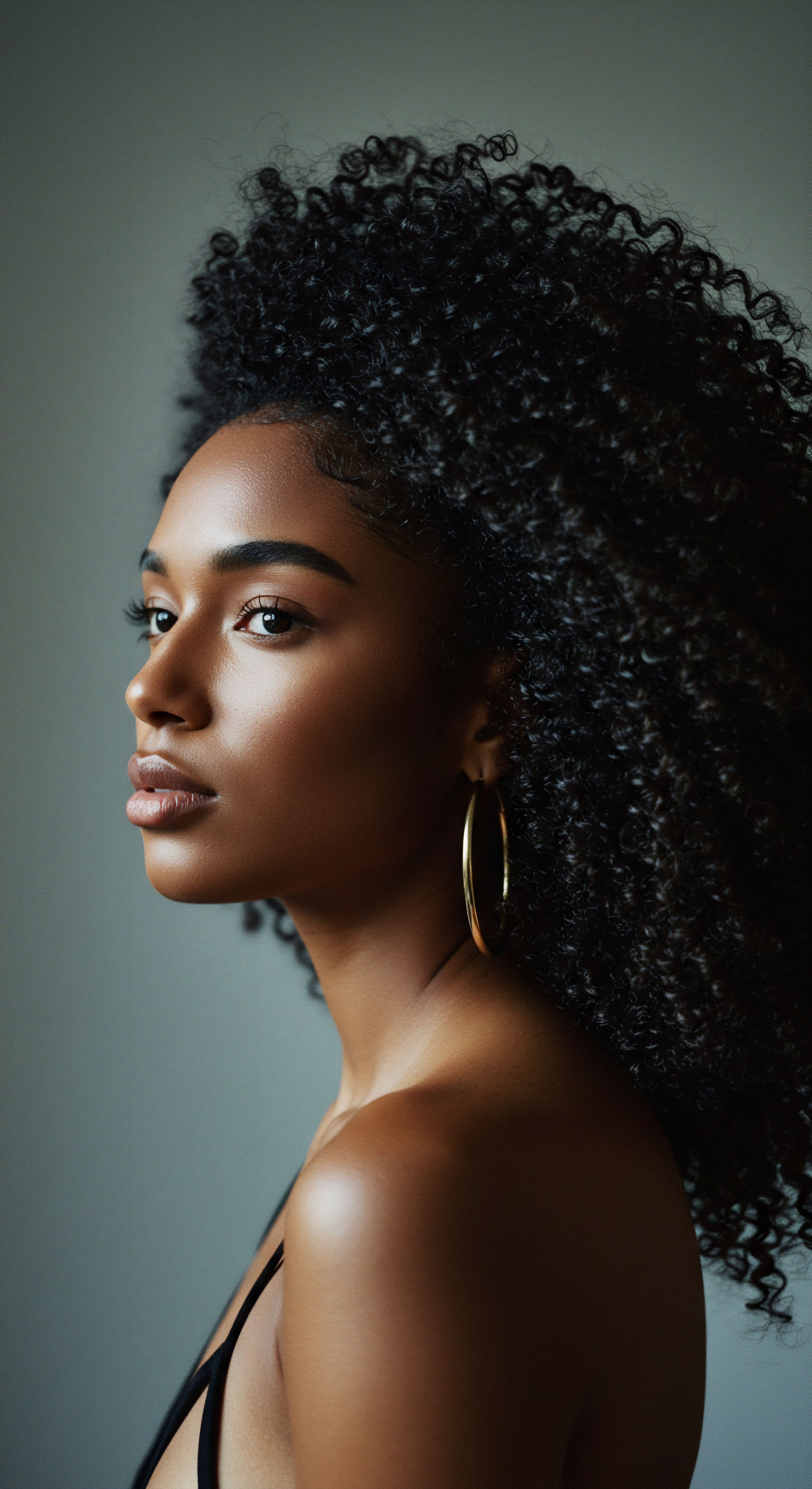
Hair’s Place in Ancient Egyptian Life
In the tapestry of ancient Egyptian existence, hair played a significant role, often dictating social standing and personal identity. Children, for instance, wore a distinctive side-lock of youth, a style shed upon reaching puberty, signifying their transition into adulthood. Men often opted for short styles or shaved heads, frequently donning wigs for hygiene and status, while women typically maintained long hair, whether their natural strands or elaborate wigs.
The meticulous care given to hair transcended social strata, from royalty adorned in complex wigs weighing up to 3 kilograms, symbolizing wealth and prestige, to commoners who still valued cleanliness and grooming. This pervasive attention to hair created a fertile ground for the widespread use of oils, recognizing their protective and beautifying properties.
Hair in ancient Egypt served as a profound marker of identity, status, and even spiritual connection.

What Did Ancient Egyptians Understand about Hair’s Needs?
The ancient Egyptians, through centuries of observation and practical application, developed a remarkable understanding of hair’s fundamental requirements. They recognized the harsh realities of their environment ❉ the intense sun, the ever-present sand, and the dry air, all of which could strip hair of its moisture and lead to damage. Their remedies and routines speak to a knowledge of hair’s need for hydration, strength, and protection.
They sought solutions to common hair concerns such as dryness, breakage, and even premature graying and hair loss, as evidenced by surviving medical texts like the Ebers Papyrus. The use of specific plant-derived oils and other natural substances was a direct response to these perceived needs, aiming to maintain hair’s integrity and aesthetic appeal.
The emphasis on cleanliness was another core tenet of their hair care philosophy. Shaving heads and wearing wigs was a common practice, not just for aesthetic reasons, but also to combat lice infestations and provide comfort in the hot climate. This highlights a practical approach to hair health that went hand-in-hand with their desire for beauty. They understood that a healthy scalp formed the foundation for healthy hair.
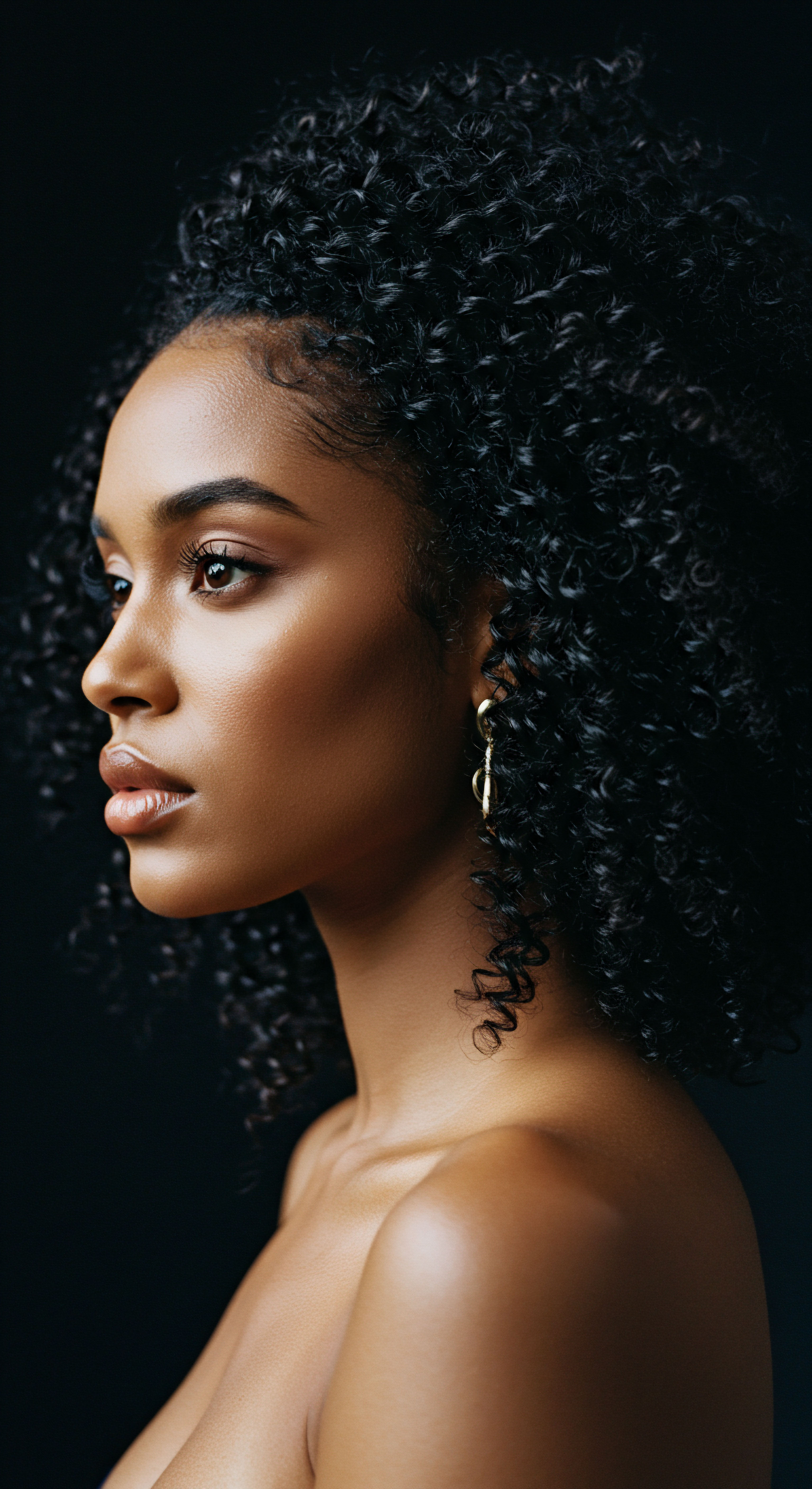
Early Hair Care Principles
- Protection from environmental elements, particularly the desert sun and sand.
- Moisture Retention to combat dryness and maintain suppleness.
- Strength to prevent breakage and maintain length.
- Cleanliness and hygiene to deter pests and maintain scalp health.
- Aesthetic Enhancement through shine, color, and texture.
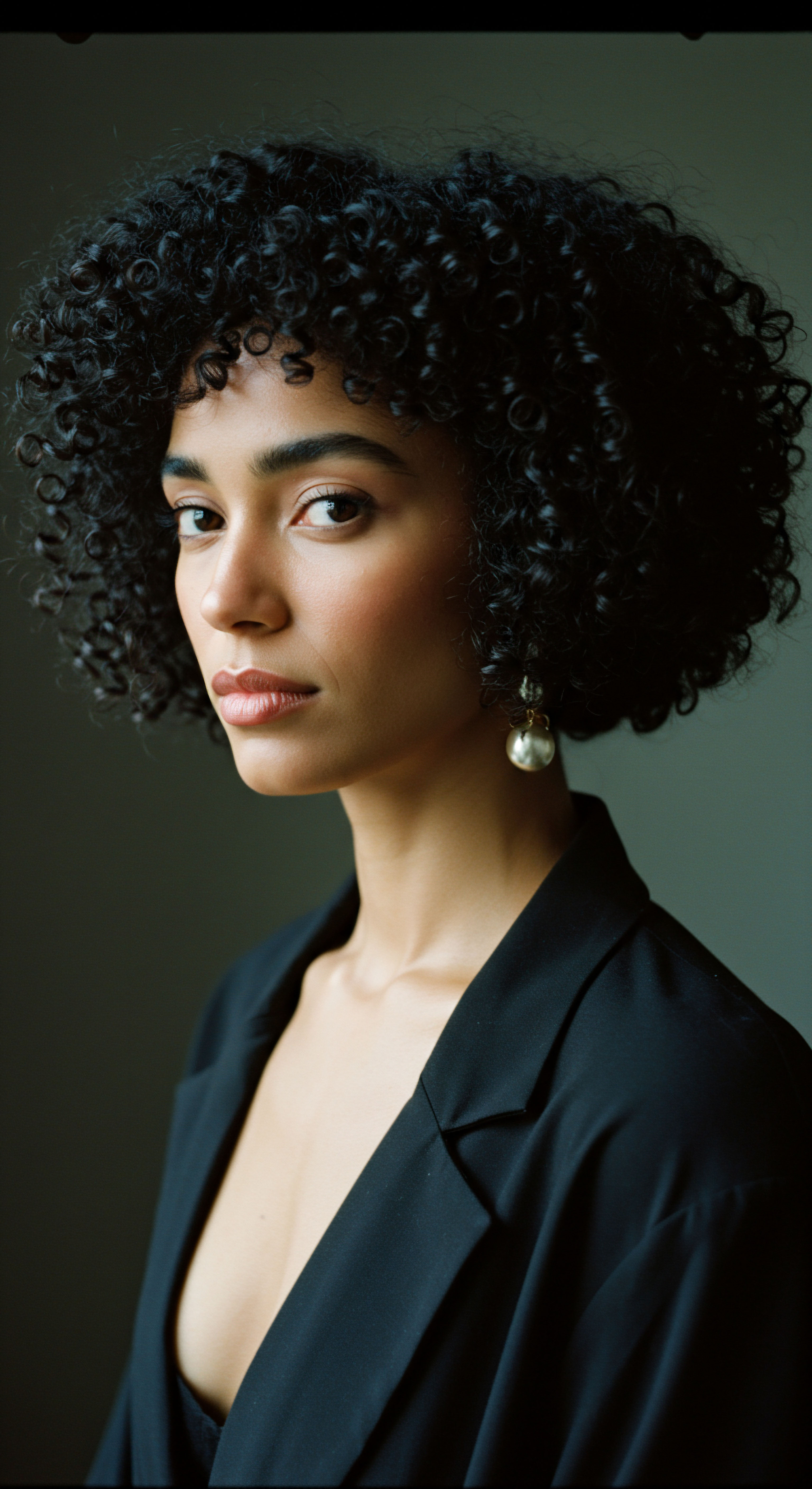
Oils as Foundational Hair Support
At the heart of ancient Egyptian hair conditioning were natural oils. These botanical extracts were not simply applied; they were often blended with other ingredients like honey, herbs, and even animal fats to create potent balms and treatments. The choice of oil was often dictated by its perceived properties, whether for growth, shine, or general health. These early forms of conditioning agents provided a protective layer, sealing in moisture and adding a desirable sheen, countering the parching effects of the desert air.
| Ingredient Castor Oil |
| Perceived Benefit for Hair Nourishment, strengthening, growth promotion, shine, moisturizing. |
| Ingredient Moringa Oil |
| Perceived Benefit for Hair Lightweight hydration, antioxidant content, scalp nourishment, growth promotion, shine, protection from sun. |
| Ingredient Sesame Oil |
| Perceived Benefit for Hair Moisturizing, shine, hair growth, dandruff reduction, base for perfumes. |
| Ingredient Almond Oil |
| Perceived Benefit for Hair Nourishment, moisturizing, skin softening, conditioning. |
| Ingredient Olive Oil |
| Perceived Benefit for Hair Moisturizing, softening, shine, cleansing rituals. |
| Ingredient Beeswax |
| Perceived Benefit for Hair Styling, setting hair, protective coating, used in balms. |
| Ingredient Honey |
| Perceived Benefit for Hair Moisturizing, revitalizing, soothing, adding shine. |
| Ingredient These natural components formed the foundation of ancient Egyptian hair care, addressing both cosmetic and protective needs. |

Ritual
Moving beyond the foundational understanding of hair’s needs, we step into the rhythmic practices that defined ancient Egyptian hair care. These were not mere casual applications; they were thoughtful, often elaborate rituals, deeply embedded in the daily routines of individuals across society. The systematic approach to conditioning, styling, and protecting hair speaks to a society that valued appearance and well-being as interconnected facets of life. These daily or periodic practices shaped the experience of hair, transforming it from a simple bodily feature into a canvas for personal expression and a shield against the elements.

Daily Hair Care Practices
The daily regimen of an ancient Egyptian, particularly those of means, included regular hair care. While bathing in the Nile or using soda-infused water was common for general hygiene, specific attention was given to hair. Combs made from wood or ivory were used for detangling and distributing products, signifying a gentle approach to hair.
The application of oils was often a tactile, massaging process, designed to work the conditioning agents into the scalp and along the hair strands. This attention to the scalp was a precursor to modern trichology, recognizing the scalp as the origin point for healthy hair.
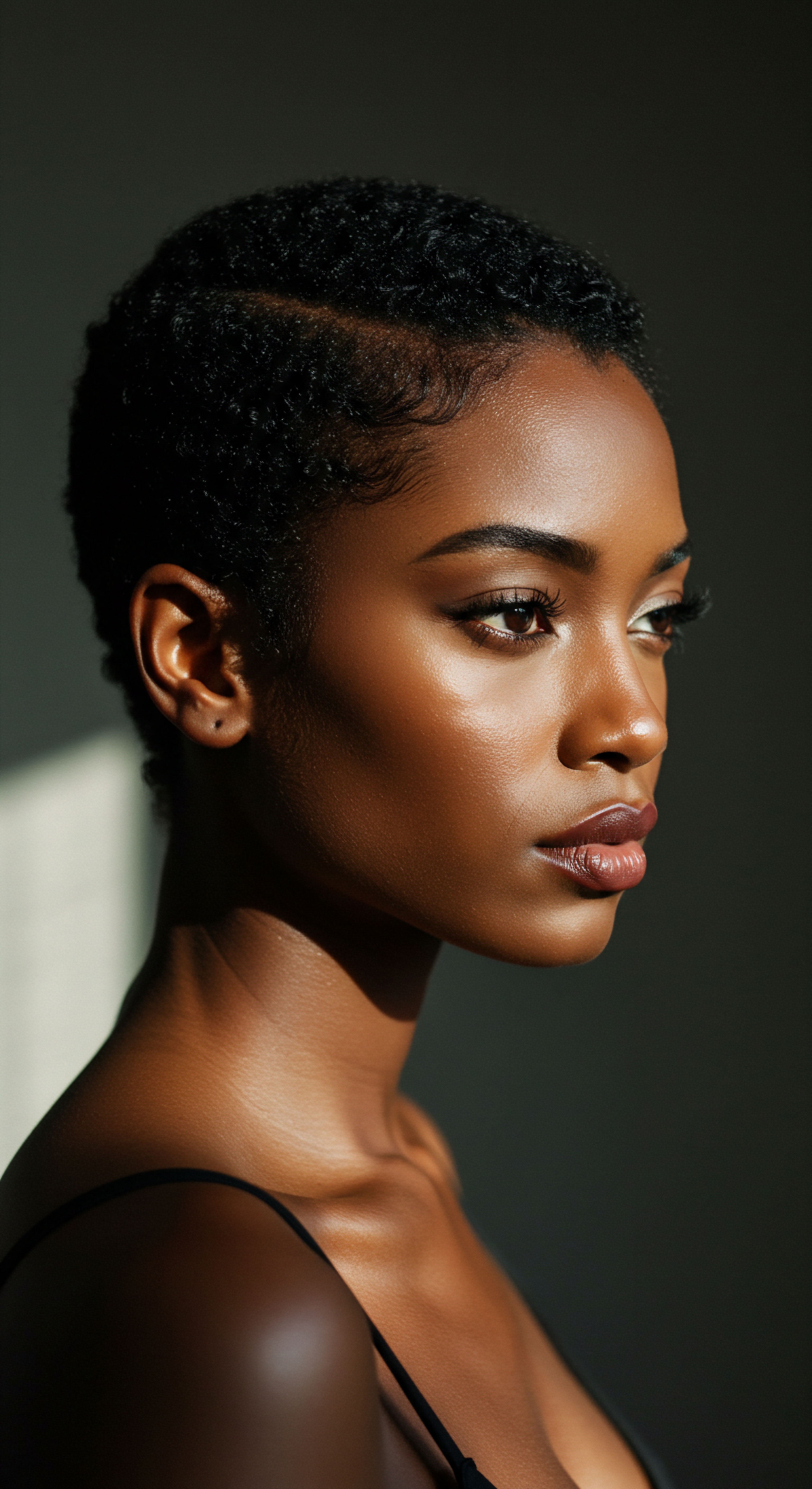
How Did Daily Life Influence Hair Rituals?
The arid climate of Egypt was a constant challenge, demanding consistent efforts to maintain hair’s hydration and appearance. This environmental pressure certainly influenced the frequency and types of conditioning rituals. Beyond climate, social standing played a substantial part. The elite, with their elaborate wigs and complex hairstyles, likely had dedicated hairdressers and access to a wider array of ingredients and tools.
For instance, depictions in tomb scenes reveal hairdressers at work, meticulously styling, plaiting, and adding hair extensions. Even the most basic workers received body oils as part of their wages, indicating a widespread societal emphasis on personal grooming and protection.
Ancient Egyptian hair care rituals were shaped by environmental demands and social hierarchy, emphasizing daily protection and meticulous grooming.
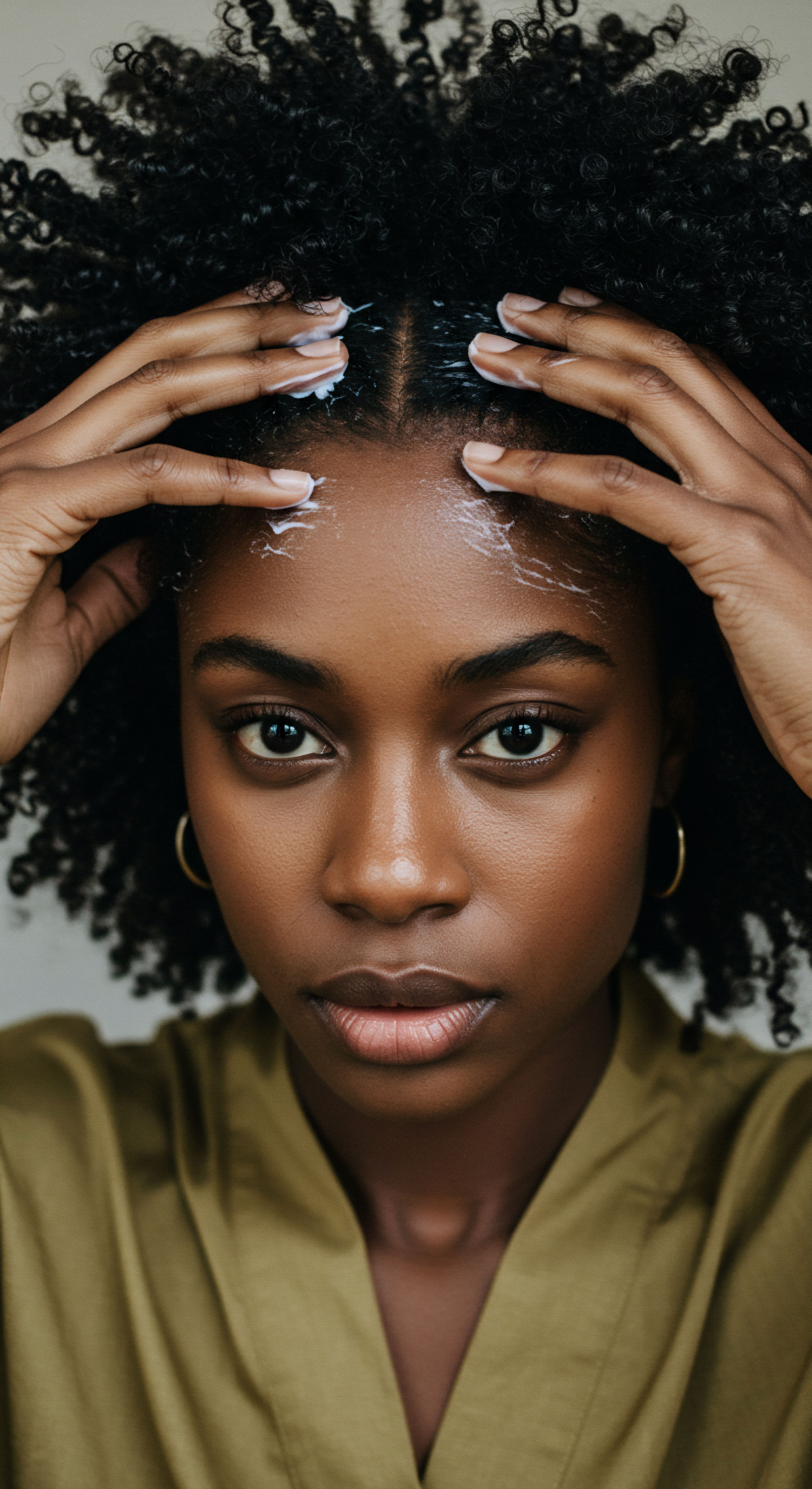
Specific Oil Blends and Their Applications
Ancient Egyptians formulated various concoctions, often combining different oils with other natural elements to achieve specific effects. For instance, castor oil, recognized for its moisturizing properties, was frequently mixed with honey and herbs to create masks that promoted growth and added shine. Moringa oil, often called “the miracle oil,” was valued for its lightweight texture and rich antioxidant content, used to nourish the scalp and promote overall hair health. Sesame oil found use not only as a conditioning agent but also as a base for perfumes and even as a remedy for dandruff and hair loss.
A fascinating aspect of their hair care involved the use of beeswax and resin. These substances were sometimes applied as a “setting lotion” to help maintain intricate hairstyles, especially for wigs. Chemical analyses of mummified hair have revealed a fat-based coating, likely used to keep styles in place in both life and death, suggesting a continuous beauty practice. This indicates a sophisticated understanding of how to achieve lasting hold and shine, even in challenging conditions.
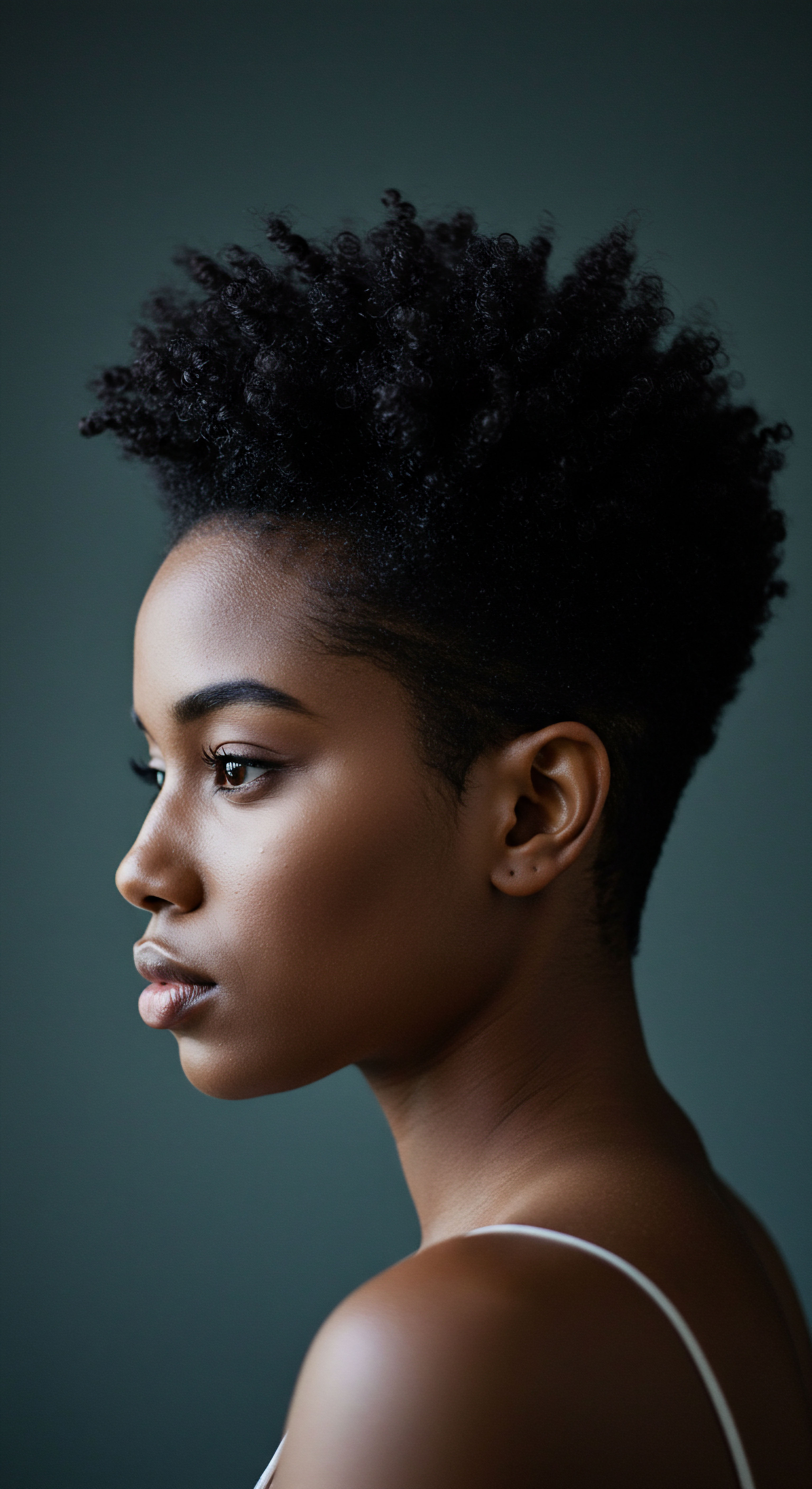
The Significance of Castor Oil
Among the many oils, Castor Oil stands out as a consistently referenced ingredient in ancient Egyptian hair care. Discovered in tombs dating back to 4000 BC, its presence underscores its long-standing recognition. It was not only applied for its conditioning properties but also mentioned in medical papyri, such as the Ebers Papyrus, for treating hair loss and other ailments. This thick, nourishing oil, rich in ricinoleic acid, was believed to strengthen hair follicles and promote healthy growth.
An intriguing real-world data point comes from analyses of mummified remains. A 2011 study on hair samples from 18 mummies, some dating back 3,500 years, found a fat-based substance coating the hair of nine mummies. This coating contained biological long-chain fatty acids, suggesting a styling product used to set hair in place.
The fact that this substance was found on both natural and artificially mummified bodies suggests its use as a beauty product during life, not just for mummification. This research challenges simpler notions of ancient hair care, pointing to a more advanced application of emollients for styling and preservation.
- Cleansing ❉ Hair was likely cleaned using natural clays or other gentle agents to remove dirt without stripping oils.
- Oiling ❉ Specific oils or oil blends were massaged into the scalp and applied along the hair length.
- Conditioning ❉ Oils were left on for a period, sometimes overnight, to deeply condition the strands.
- Styling ❉ Combs and potentially beeswax or resin were used to arrange and set hair, or wigs, into desired styles.
- Adornment ❉ Flowers, ribbons, beads, and jewels were incorporated to further enhance the styled hair.
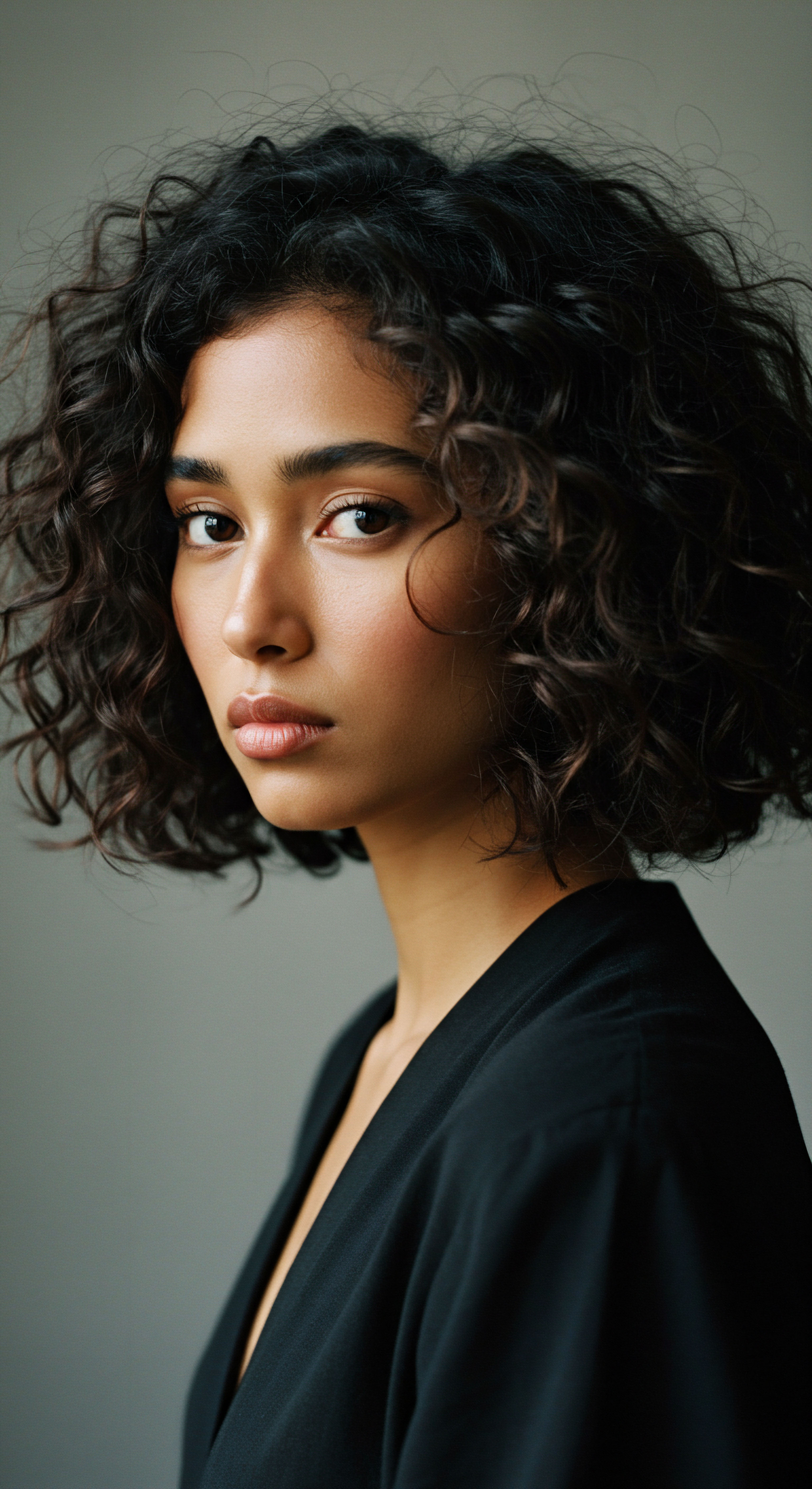
Relay
As we delve deeper into the wisdom of ancient Egyptian hair care, a more complex understanding emerges, one that transcends simple beauty applications and touches upon the intersections of science, culture, and environmental adaptation. What can the preserved hair of ancient Egyptians tell us about their daily lives, their environment, and the true efficacy of their chosen oils? The answers lie not just in historical texts, but in the meticulous work of modern archaeology and biomolecular analysis, allowing us to connect ancient practices with contemporary scientific insights.

Scientific Analysis of Ancient Hair
The examination of mummified hair provides a unique window into the past, offering tangible evidence of ancient hair health and the substances applied to it. Scientists analyze the chemical composition of hair strands and the residues found on them to identify the oils and other compounds used. Studies have confirmed the presence of various lipids, including fatty acids, indicating the application of animal fats and plant oils. These analyses help to corroborate historical texts and artistic depictions, providing a more complete picture of ancient conditioning practices.
For instance, the identification of ricinoleic acid in some mummy balms strongly suggests the presence of Castor Oil, often mixed with other oils. This chemical fingerprint validates the historical accounts of castor oil’s widespread use. Beyond simple identification, such analyses can sometimes reveal the degree of degradation, offering clues about storage, application methods, and the longevity of these ancient conditioning treatments.
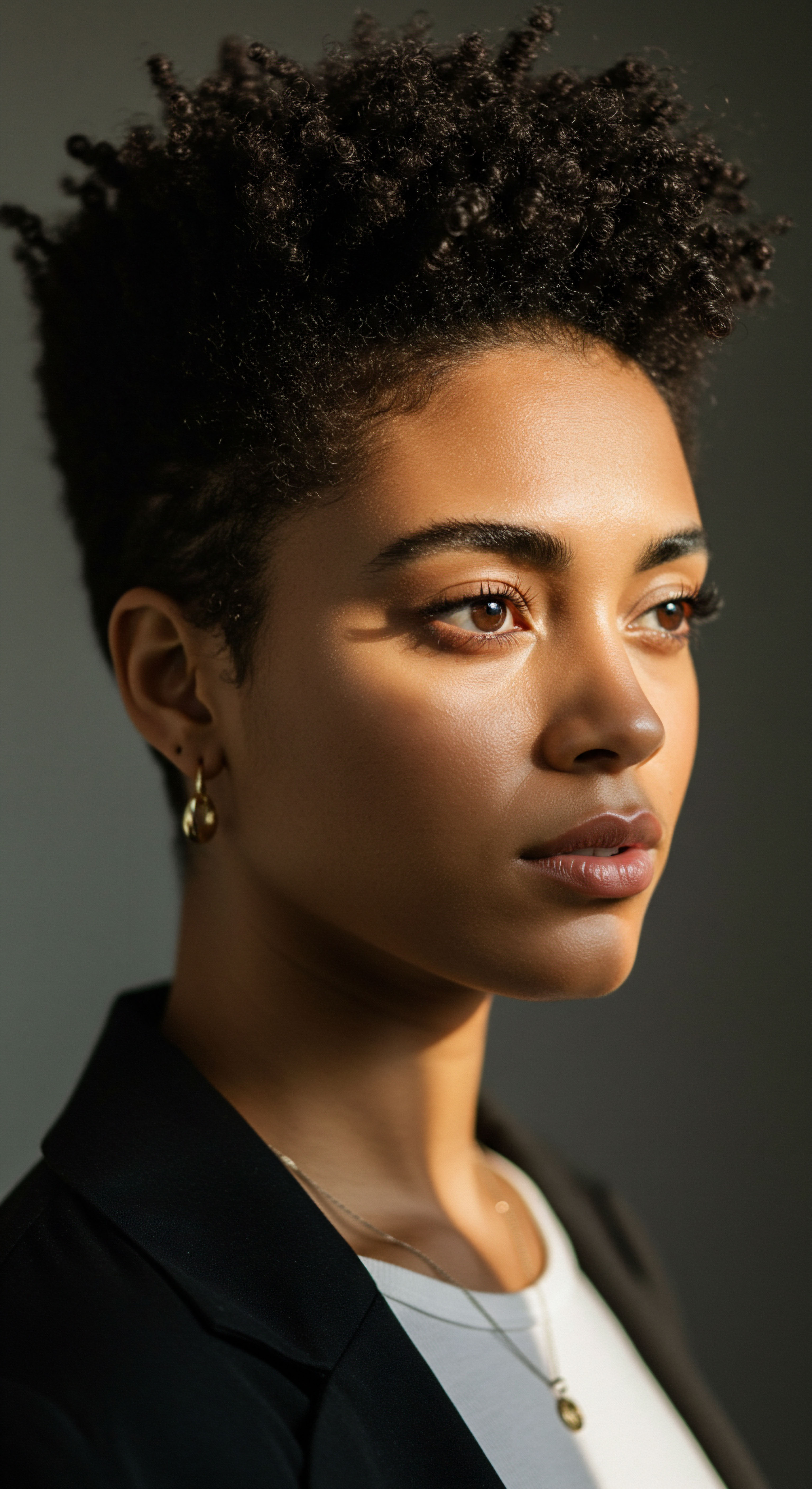
Chemical Properties of Ancient Oils and Modern Parallels
The oils favored by ancient Egyptians possess distinct chemical profiles that align with their conditioning properties.
- Castor Oil ❉ Its richness in ricinoleic acid, a unique hydroxyl fatty acid, contributes to its thick consistency and its ability to act as a humectant, drawing moisture to the hair and sealing it in. This property would have been invaluable in the arid Egyptian climate, preventing dryness and breakage. Modern hair products still value castor oil for these very reasons, particularly for textured and dry hair.
- Moringa Oil ❉ Known for its high concentration of oleic, palmitoleic, and linoleic acids, alongside vitamins A, C, and E, moringa oil is light, absorbs quickly, and is resistant to rancidity due to its antioxidant content. These qualities make it an excellent choice for scalp nourishment, hair cleansing, and providing shine without heavy residue, echoing its traditional use for protection against sun and desert winds.
- Sesame Oil ❉ Abundant in vitamin E and various fatty acids, sesame oil was used for its moisturizing and strengthening properties. Its application would have provided a protective layer, aiding in shine and potentially reducing dandruff. Modern formulations also leverage sesame oil for its nourishing capabilities.
- Almond Oil ❉ A light emollient rich in monounsaturated fatty acids and vitamins, almond oil would have offered gentle conditioning and softening effects, making hair more manageable.
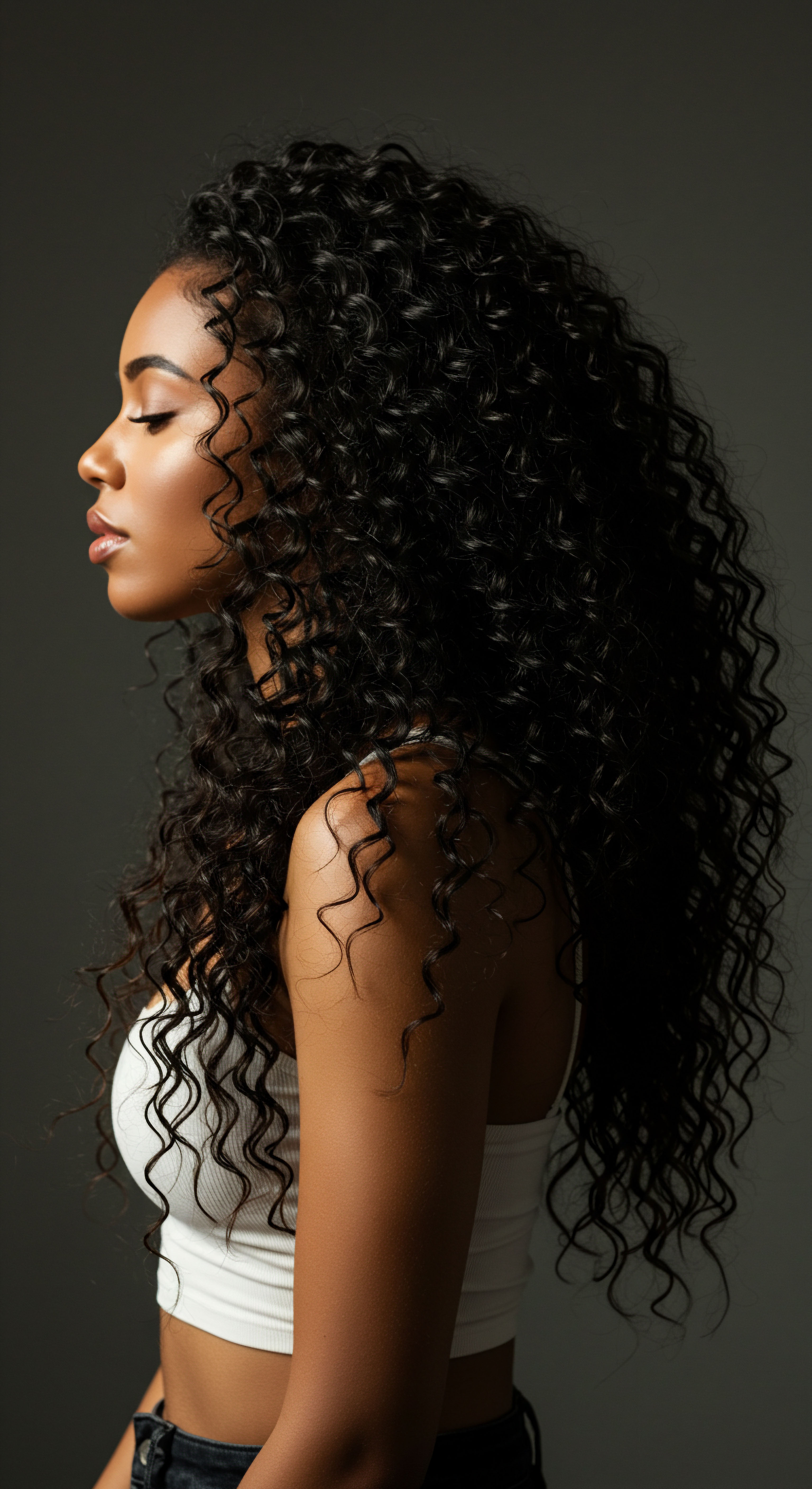
What Enduring Lessons can We Learn from Ancient Egyptian Hair Practices?
The ancient Egyptians, through their intuitive understanding and practical experimentation, left us with valuable lessons that resonate today, especially for those with textured hair. Their focus on natural ingredients, regular oiling, and protective styling aligns remarkably with modern textured hair care principles. The severe desert environment compelled them to prioritize moisture and protection, a challenge familiar to many with curls and coils that are prone to dryness.
Their approach to hair care was deeply integrated with their broader concept of well-being, where physical appearance was intertwined with health, social standing, and even spiritual purity. This holistic perspective reminds us that hair care extends beyond superficial aesthetics, connecting to self-perception and overall wellness. The enduring use of oils like castor and moringa, from ancient Egypt to contemporary formulations, speaks to their timeless efficacy and the deep-seated wisdom of our ancestors.
Ancient Egyptian hair care offers enduring wisdom, emphasizing natural ingredients, protective methods, and a holistic view of well-being that aligns with modern textured hair care.
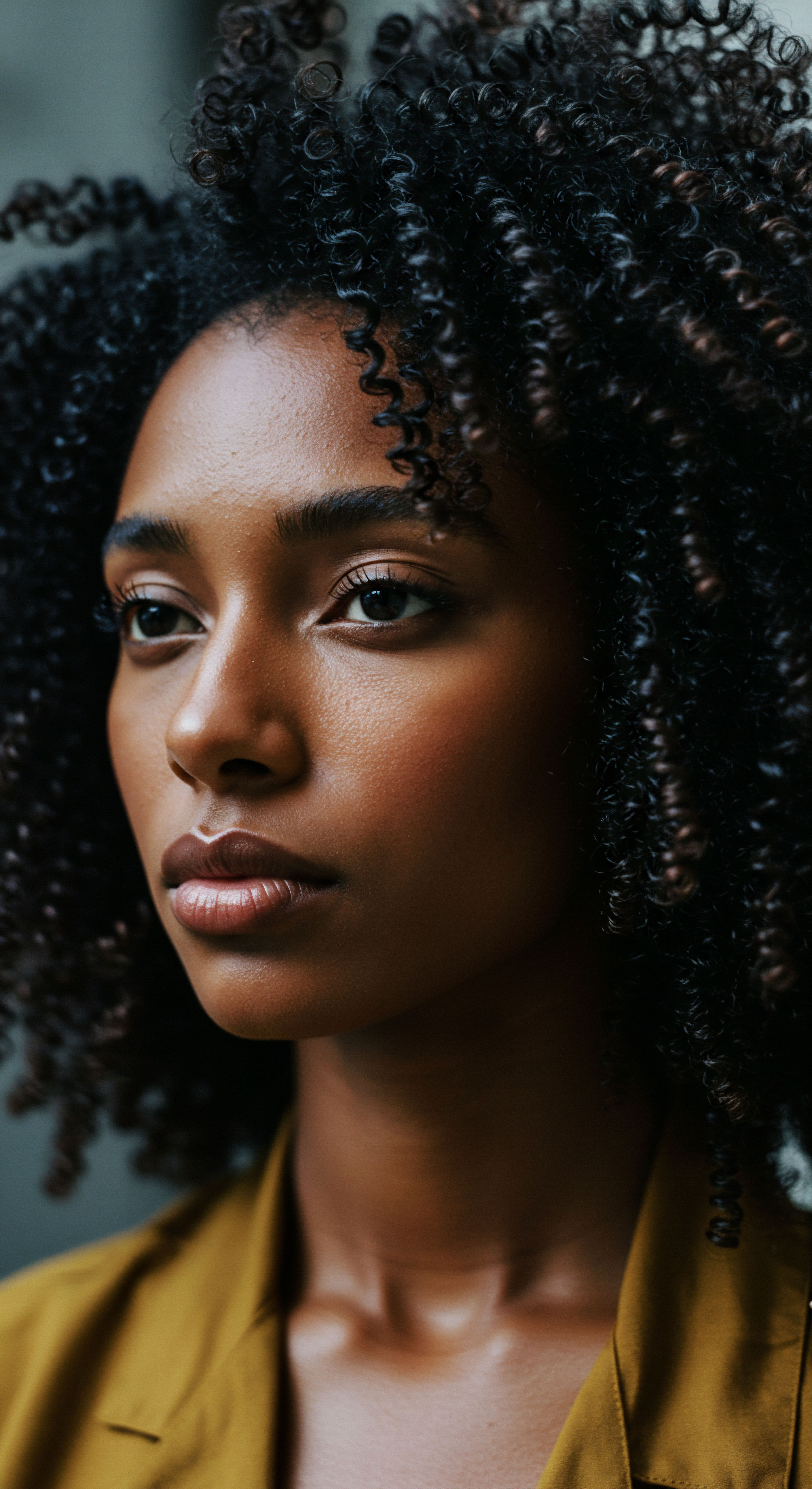
The Interplay of Climate, Lifestyle, and Hair Health
The extreme climate of ancient Egypt significantly shaped their hair care practices. The intense sun and dry air necessitated constant hydration and protection. This led to the adoption of wigs, which provided both stylistic versatility and practical benefits, shielding the scalp from direct sunlight and allowing heat to escape through their mesh foundations. The prevalence of head shaving among certain groups, like priests, for purity and hygiene, further underscores the environmental and cultural adaptations.
Their lifestyle, which often involved working outdoors, also influenced their hair needs. The frequent use of oils provided a barrier against environmental aggressors and helped to keep hair pliable and less prone to tangling in dusty conditions. The meticulousness observed in their hair care, from daily oiling to the creation of elaborate wigs, points to a society that valued appearance and health as intertwined aspects of a well-lived life.
| Ancient Egyptian Oil Castor Oil |
| Key Chemical Properties High in ricinoleic acid (a hydroxyl fatty acid) |
| Modern Cosmetic Application Hair growth serums, deep conditioners, scalp treatments for moisture and strength. |
| Ancient Egyptian Oil Moringa Oil |
| Key Chemical Properties Rich in oleic, palmitoleic, linoleic acids; vitamins A, C, E; antioxidants. |
| Modern Cosmetic Application Lightweight hair oils, anti-aging skin products, scalp balms for hydration and shine. |
| Ancient Egyptian Oil Sesame Oil |
| Key Chemical Properties Source of vitamin E, linoleic acid, oleic acid. |
| Modern Cosmetic Application Hair growth treatments, dandruff remedies, massage oils, heat protectants. |
| Ancient Egyptian Oil Almond Oil |
| Key Chemical Properties Primarily monounsaturated fatty acids (oleic acid), vitamin E. |
| Modern Cosmetic Application Leave-in conditioners, softening hair masks, scalp soothing treatments. |
| Ancient Egyptian Oil The chemical properties of these ancient oils align with their enduring benefits in modern hair and skin care. |

Key Scientific Insights on Ancient Egyptian Hair Care
- Fat-Based Coatings ❉ Archaeological analyses reveal mummified hair often coated with a fat-based substance, likely a styling product used to maintain elaborate coiffures in life and death.
- Presence of Specific Lipids ❉ Chemical identification of ricinoleic acid points to the consistent use of Castor Oil in ancient Egyptian hair balms.
- Hair as a Biomarker ❉ The preserved hair itself offers insights into diet, health, and lifestyle of ancient Egyptians, making it a valuable subject for scientific study.
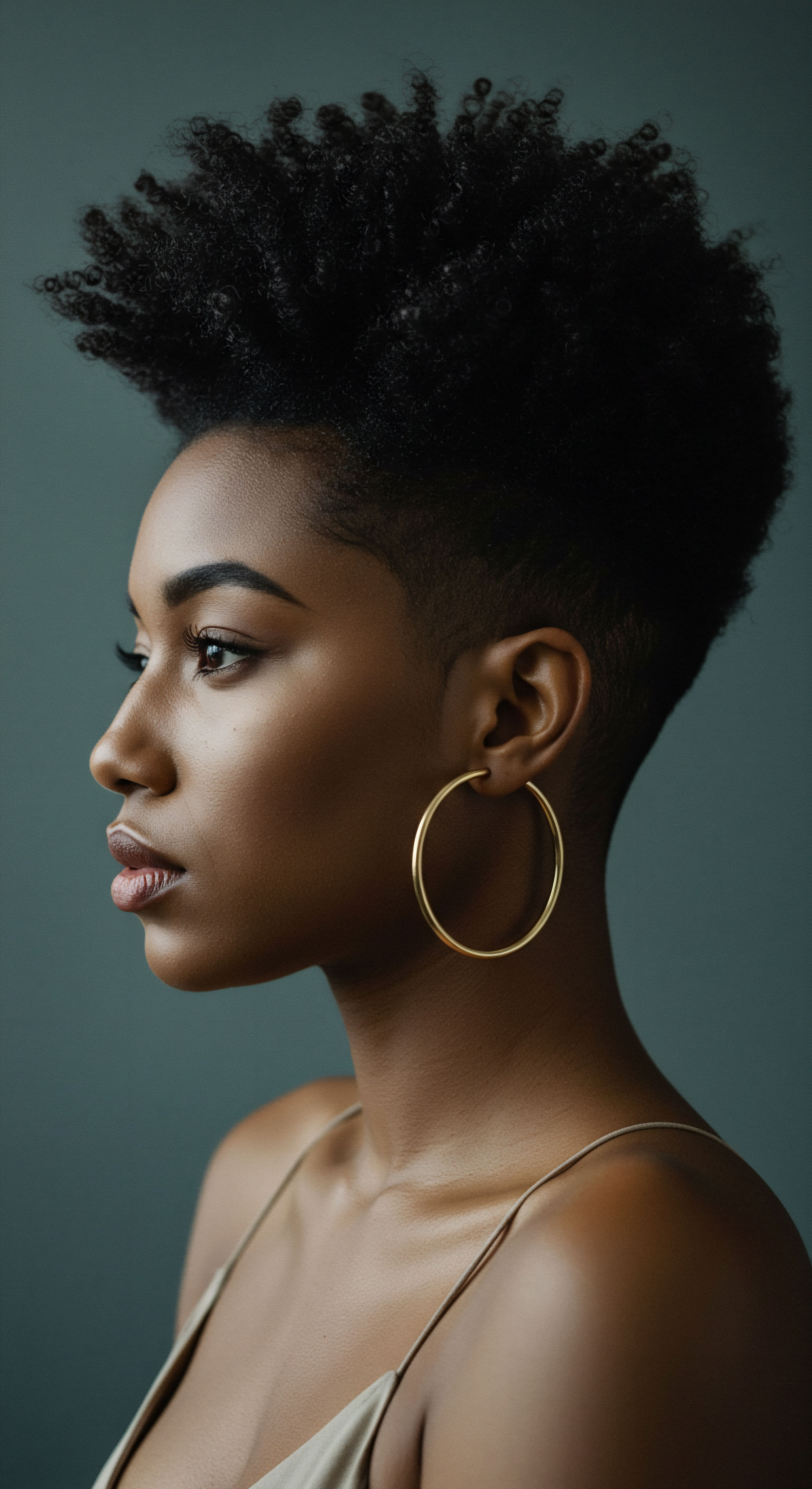
Reflection
The journey through ancient Egyptian hair care unveils a timeless connection between humanity and the earth’s offerings. It reveals a quiet dedication to well-being, where hair was not just an adornment but a vital part of self. The echoes of their practices, the whispers of castor and moringa oils, remind us that the most profound secrets often lie in simplicity and the enduring wisdom of nature.
We find ourselves, millennia later, still seeking that same radiant health for our strands, often turning to the very ingredients that graced the heads of pharaohs and queens. The pursuit of healthy, beautiful hair remains a continuous thread, connecting us to those who walked the sun-drenched banks of the Nile, long ago.
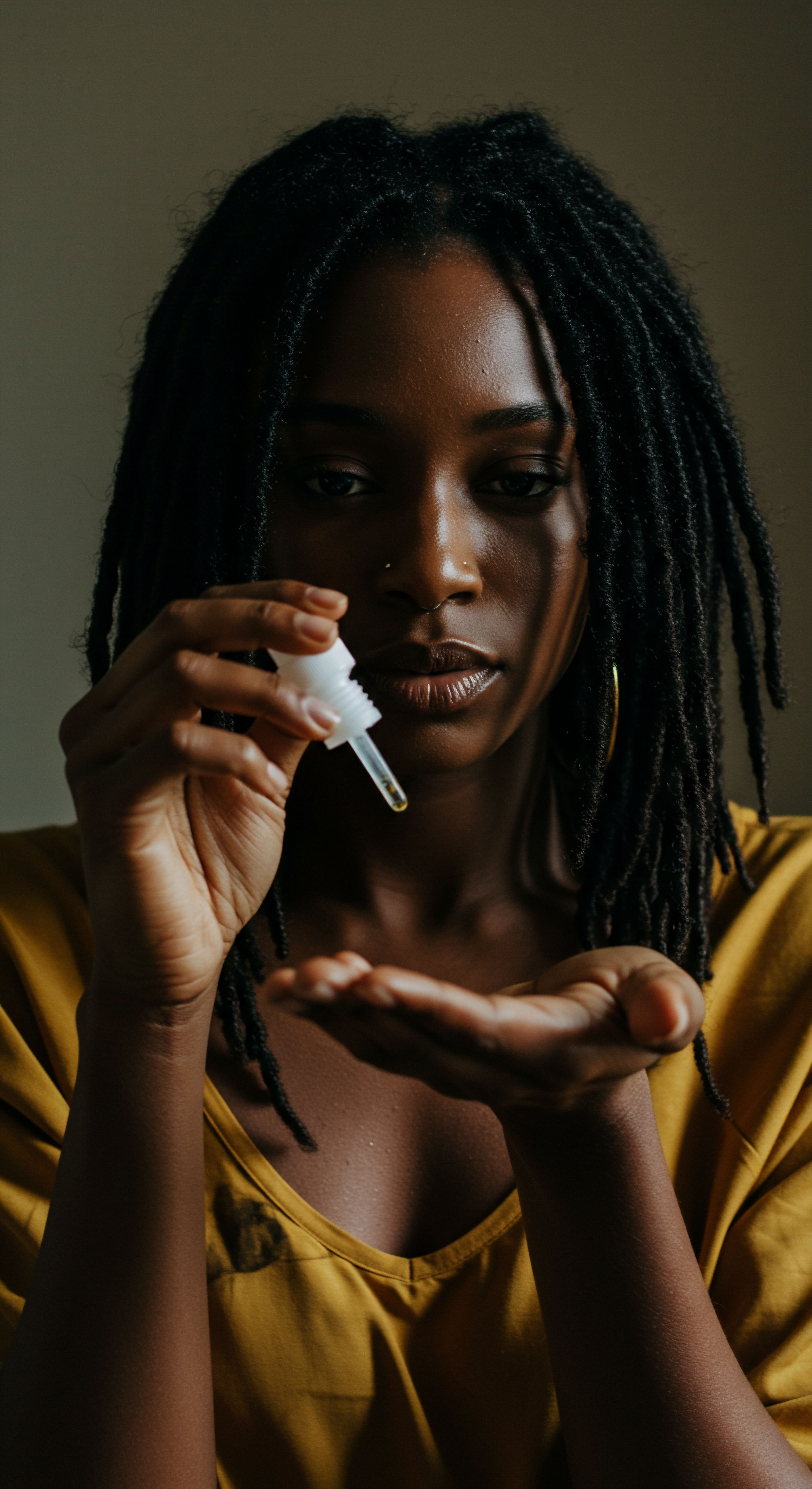
References
- Marshall, Amandine. The magic and power of hair in ancient Egypt. The Past, 2025.
- Tassie, Geoffrey John. The Social and Ritual Contextualisation of Ancient Egyptian Hair and Hairstyles from the Protodynastic to the End of the Old Kingdom. UCL Discovery, 2011.
- Kandil, Hoda Abd Allah, and Salama, Mahmoud El-Mohamdy Abdelhady. Role of the Hair in Ancient Egypt. International Journal of Tourism and Hospitality Management, 2018.
- Kandil, Hoda Abd Allah, and Salama, Mahmoud El-Mohamdy Abdelhady. Role of the Hair in Ancient Egypt. ResearchGate, 2024.
- Arab News. The secret of ancient Egyptian beauty. Arab News, 2012.
- Ancient Egyptian Hair and Beauty. Accessed May 23, 2025.
- Robins, Gay. Hair, Gender, and Social Status in Ancient Egypt. JSTOR Daily, 2020.
- Hair Care Secrets of the Past ❉ What Our Ancestors Used for Healthy Hair. Accessed May 23, 2025.
- LUSH. Beauty secrets of the past. LUSH, Accessed May 23, 2025.
- Egyptra Travel Services. From Ancient Egypt to Modern Beauty ❉ Timeless Cosmetic Secrets. Egyptra Travel Services, 2025.
- Rageot, M. Hussein, Ramadan B. Beck, Susanne, and Stockhammer, Philipp Wolfgang. An Integrated Study of the Hair Coating of Ancient Egyptian Mummies. ResearchGate, 2023.
- Global Beauty Secrets. Egyptian Honey and Castor Hair Oil. Global Beauty Secrets, Accessed May 23, 2025.
- Qhemet Biologics. The History & Benefits of Castor Oil. Qhemet Biologics, 2024.
- Etre Vous. Here’s why hair oiling is the ancient ritual worth adopting. Etre Vous, Accessed May 23, 2025.
- Totnes Fashion & Textiles Museum. Hair and Wigs in Ancient Egypt. Totnes Fashion & Textiles Museum, Accessed May 23, 2025.
- The Mane Choice. Ancient Egyptian Anti-Breakage & Repair Antidote Oil. The Mane Choice, Accessed May 23, 2025.
- Medical News Today. Castor oil for hair ❉ Benefits, uses, and more. Medical News Today, 2025.
- Naturali. Moringa Oil 101 ❉ Everything You Need To Know About Liquid Gold. Naturali, 2024.
- Fletcher, Joann. The Most Democratic Form of Adornment Through their hairstyles and wigs, still visible in art and preserved on mummies, much can be gleaned about the ancient Egyptians’ fashion, health, diet and lifestyle across time. Rawi, Accessed May 23, 2025.
- The Jedwards Blog. Moringa Oil ❉ Heavy on Nutrients, Light on Skin and Hair. The Jedwards Blog, 2014.
- Hathor Organics. Moringa Oil. Hathor Organics, Accessed May 23, 2025.
- lavividhair. How Did Ancient Egypt Treat Hair Loss?. lavividhair, 2021.
- Rthvi. Exploring Ancient Hair Care Rituals ❉ Timeless Practices for Modern Hair Wellness. Rthvi, 2024.
- TheCollector. Ancient Egypt’s Most Indulgent Beauty Secrets. TheCollector, 2022.
- The ‘beauty archaeologist’. The Egyptian Hair Loss Recipe for Very Hated People ~. The ‘beauty archaeologist’, 2020.
- threetextures. MOLIE MORINGA SCALP AND HAIR STRENGTHENING OIL. threetextures, Accessed May 23, 2025.
- Rageot, M. Hussein, Ramadan B. Beck, Susanne, and Stockhammer, Philipp Wolfgang. Ancient Egyptian hair gel ❉ New insight into ancient Egyptian mummification procedures through chemical analysis. ResearchGate, 2011.
- Africa Moringa Hub. Moringa Oil – Its Origins and Its Uses. Africa Moringa Hub, 2022.
- Eat Like A Sultan. Spotlight on ❉ sesame. Eat Like A Sultan, 2023.
- Carmesi. 7 Ancient Ways To Wash And Condition Your Hair. Carmesi, 2022.
- Wikipedia. Hair oil. Wikipedia, Accessed May 23, 2025.
- VVV ANANDHAM. Egyptian Secrets. VVV ANANDHAM, Accessed May 23, 2025.
- Nature Middle East. Ancient Egyptian hair gel ❉ New insight into ancient Egyptian mummification procedures through chemical analysis. Nature Middle East, 2011.
- Fletcher, J. and Salamone, F. An Ancient Egyptian Wig ❉ Construction and Reconstruction. Internet Archaeology, 2016.
- Preneur World Magazine. Five Beauty Secrets of the Ancient Egyptians. Preneur World Magazine, Accessed May 23, 2025.